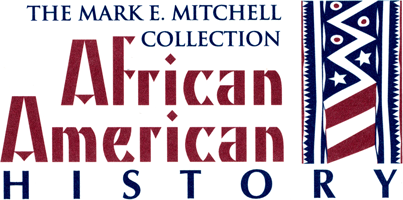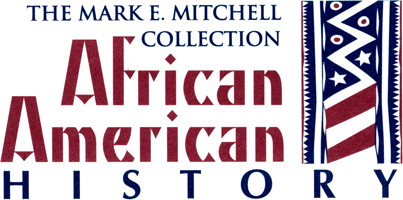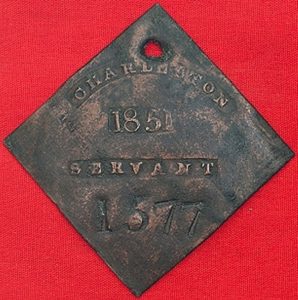Charleston Slave Tag designates a hired servant in 1851.
Slave badges were issued by Charleston, SC, from 1800 until 1864 during the Civil War, and remain the only articles exclusively made for and worn by the enslaved.
Their use permitted slaveholders to hire out certain slaves who, displaying the badge around the neck or sewn onto clothing, could travel openly to and from work. Tags were annually taxed, dated, numbered and priced according to any of some 38 different occupations, such as: Porter, Mechanic, Driver, Fisher, Fruiterer, or Huckster (Salesperson). Besides tag-wearers’ employment in the massive-scale transformation and fortification of Charleston’s harbor and waterways, their specialized skills, knowledge, and talent are everywhere apparent in the preserved cityscape of today.
By 1851, slave tags were issued to about half the area’s bondspersons. Of the 6350 servant badges produced that year, 4668 were actually issued, yet only a dozen examples from 1851 have been found. Except for servant badges, most tags had their corners clipped off or rounded to prevent injury.
Charleston also had over 2,000 free-blacks in its workforce who were required at all times to carry proof of their elevated status. Lacking such documentation or a slave tag, it was nearly impossible for a runaway to obtain employment, and a fugitive’s best hope for escape lay in approaching a ship’s captain for work, and captains were specifically cautioned against this. In time, the city’s slaveholders would come to incentivize against escape by allowing slaves either a small or significant portion of their earnings.
Although no records survive to identify the enslaved who wore them, like finding a medal for wartime valor in a pawnshop, each tarnished badge proclaims an existential convergence of sacrifice, time and place, while omitting the player and salient facts of its presentation.


